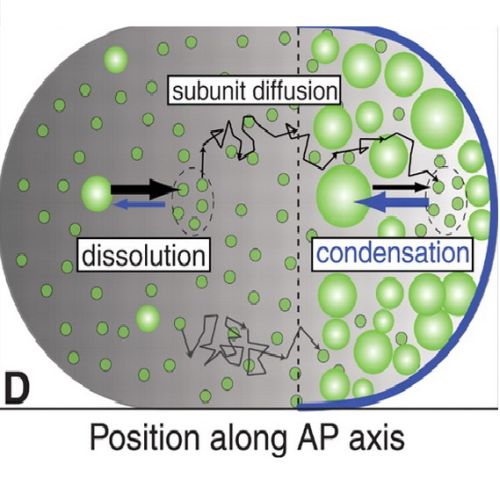Germline P granules are liquid droplets that localize by controlled dissolution/condensation.
In sexually reproducing organisms, embryos specify germ cells, which ultimately generate sperm and eggs. In Caenorhabditis elegans, the first germ cell is established when RNA and protein-rich P granules localize to the posterior of the one-cell embryo. Localization of P granules and their physical nature remain poorly understood. Here we show that P granules exhibit liquid-like behaviors, including fusion, dripping, and wetting, which we used to estimate their viscosity and surface tension. As with other liquids, P granules rapidly dissolved and condensed. Localization occurred by a biased increase in P granule condensation at the posterior. This process reflects a classic phase transition, in which polarity proteins vary the condensation point across the cell. Such phase transitions may represent a fundamental physicochemical mechanism for structuring the cytoplasm.

- Science 2009 Jun 26;324(5935):1729-32
- 2009
- Biophysics
- 19460965
- PubMed
Enabled by:
